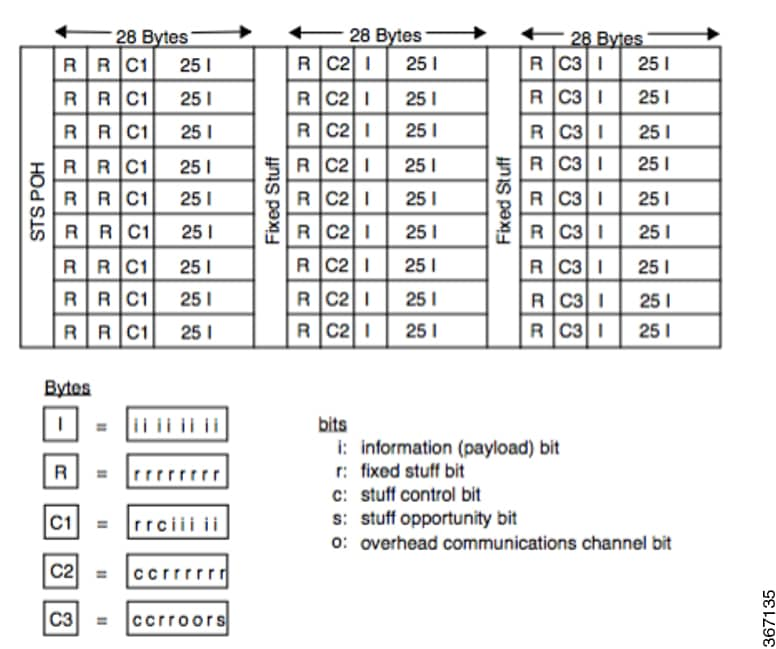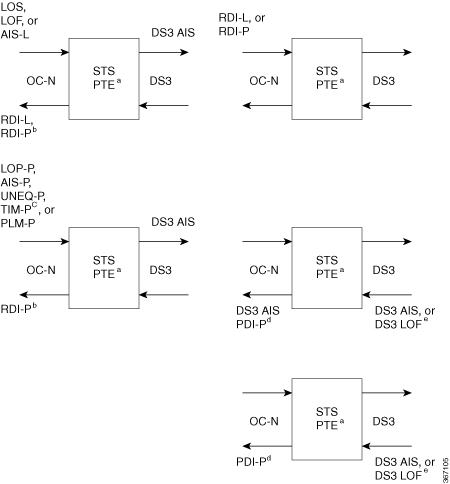STS-1 Frame
A standard STS-1 frame is nine rows by 90 bytes. The first three bytes of each row represent the Section and Line overhead. These overhead bits comprise framing bits and pointers to different parts of the STS-1 frame.

There is one column of bytes in the payload that represents the STS path overhead. This column frequently "floats" throughout the frame. Its location in the frame is determined by a pointer in the Section and Line overhead.
The combination of the Section and Line overhead comprises the transport overhead, and the remainder is the SPE.



 Feedback
Feedback